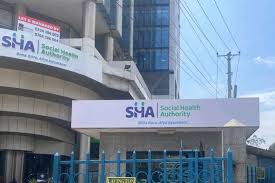

The Social Health Authority (SHA) is grappling with a major financial challenge due to inconsistent remittances from registered members. Despite having 19 million people enrolled, only 4 million are actively making their monthly contributions. This shortfall is putting immense pressure on the sustainability of healthcare services across the country.
According to the Ministry of Health, informal sector workers are carrying much of the financial burden, covering costs for those who fail to remit their contributions. The government is urging all registered members to undergo means testing to ensure fair contribution rates and create a more balanced system. The growing debt within the healthcare sector has raised concerns about the ability of SHA to continue funding essential medical services. In response, the Ministry of Health has stated that it is actively engaging with the Treasury to find solutions for clearing the outstanding arrears.
Officials say their primary objective is to ensure that hospitals and healthcare facilities remain well-equipped and adequately funded. They emphasize that addressing these financial shortfalls is crucial to maintaining the quality of care for all Kenyans, regardless of their financial status.The government’s move to work with the Treasury signals an effort to stabilize the situation, but questions remain about the long-term sustainability of SHA’s funding model. If remittance levels do not improve, the financial strain on healthcare facilities could persist, affecting service delivery.

As the Ministry of Health takes steps to resolve the crisis, experts warn that more needs to be done to encourage compliance among registered members. Without increased remittances, the debt problem may continue to grow, further complicating efforts to maintain a stable healthcare system. The coming months will be crucial in determining whether the government’s intervention will be effective. Healthcare stakeholders will be watching closely to see if these measures lead to increased funding and improved financial stability for SHA.
Ultimately, the success of these efforts will depend on whether registered Kenyans actively contribute to the system. If more people commit to regular remittances, SHA could overcome its financial hurdles and ensure uninterrupted healthcare services for the nation.





